
table of contents
- When is mushroom season?
- Mushroom calendar
- Mushroom varieties from A to D
- Mushroom varieties from E to G
- Mushroom varieties from H to M
- Mushroom varieties from P to T
Various edible mushrooms grow in the wild. Our mushroom calendar gives you an overview of the most common varieties and their season. This allows you to search for it in a targeted manner.
When is mushroom season?
We can find it at any time of the year, even in winter! When speaking of mushroom season, however, it refers to the time of year when most mushroom varieties can be seen and the largest number of mushrooms can be expected.
- the main season in this country goes from late summer to early autumn
- each type of mushroom has its own collection time, see mushroom calendar
- the duration varies from variety to variety
- usually it extends over several months
- often a low season precedes or follows on from it
- If the weather is favorable, the mushroom season starts earlier or lasts longer
- Several rainy days in a row are advantageous
- if it is very dry, the basket can remain largely empty even in the main season
- there can also be regional differences due to climate change
Note: Some types of fungi are dependent on certain types of trees. If their population in the forest is declining, they too will not be there.
Mushroom calendar
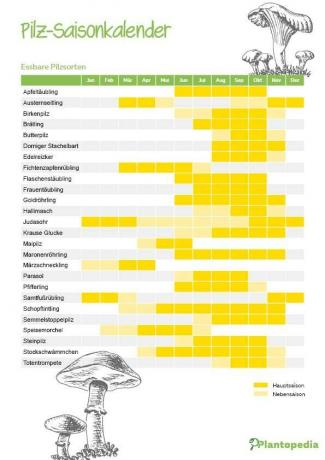
With our mushroom calendar you can get an overview of the entire mushroom season. The calendar with the different types of mushrooms mentioned in this article and the appropriate collection time can be downloaded here.

Mushroom varieties from A to D
Apple pavement

- up to 8 cm high and 12 cm wide
- white stem, semicircular red hat
- occurs in moist coniferous forests
- is in season from June to October
- Risk of confusion: Speitäubling
Oyster string
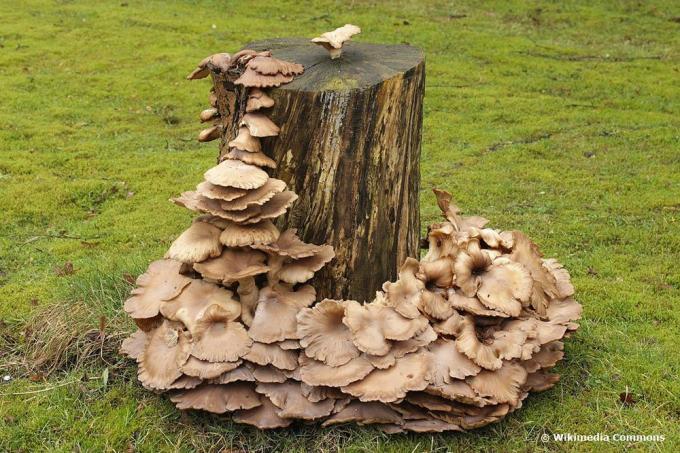
- also known as veal mushroom
- 5-15 cm wide, gray-brown to slightly purple
- grows in clusters on hardwood trunks
- Main occurrences in November to December as well as February and March
- occasionally in May, September and October
- Risk of confusion: yellow-stemmed oyster mushrooms
Birch mushroom
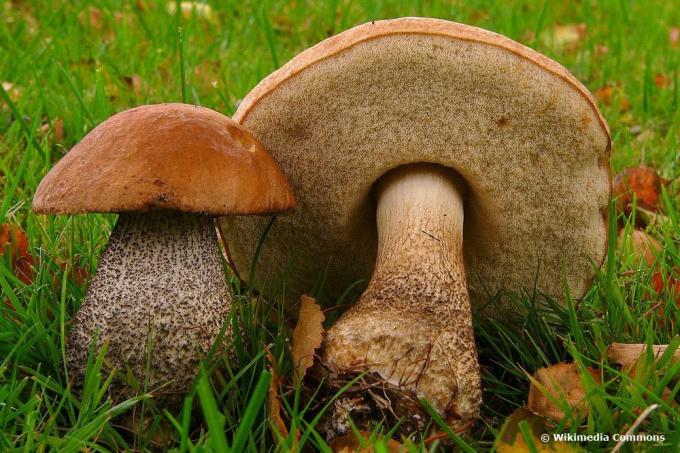
- up to 15 cm high and wide
- brownish hat, white stem with dark scales
- can be found under birch trees (lives in symbiosis with them)
- mainly from August to October
- but also in June, July and November
- Risk of confusion: with other tubulars, which however are non-toxic
Patty

- not listed under this name in every mushroom calendar, as it has many
- approx. 12 cm high, 5-15 cm wide
- Hat and stem are orange, yellow lamellas,
- milky fluid escapes in the event of injuries
- grows in deciduous and coniferous forests as well as on roadsides
- from July to October
- Special feature: strong fish odor, makes confusion difficult
Butter mushroom
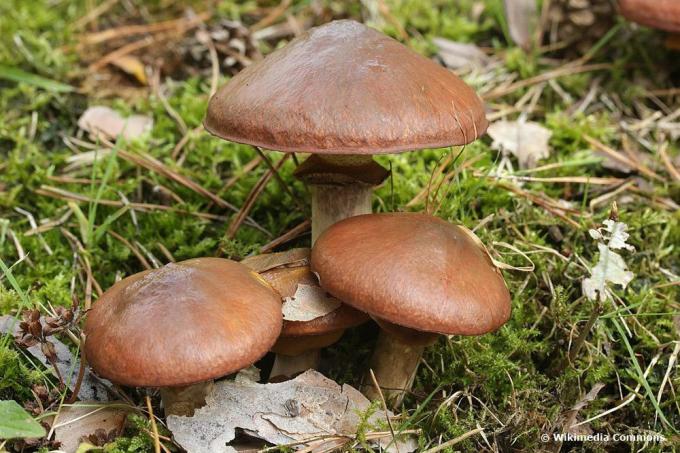
- 4-10 cm wide hat, brown, hemispherical and slimy
- smells like fruit
- Pine forests are his home
- in the mushroom calendar it is from August to November
- but mainly in September and October
- Risk of confusion: golden bolete
Note: Although the mushroom is edible, it can cause allergic reactions. For example, gastrointestinal irritation was observed after eating the mushroom. Fungal skin is also said to cause diarrhea and indigestion.
Thorny goatee
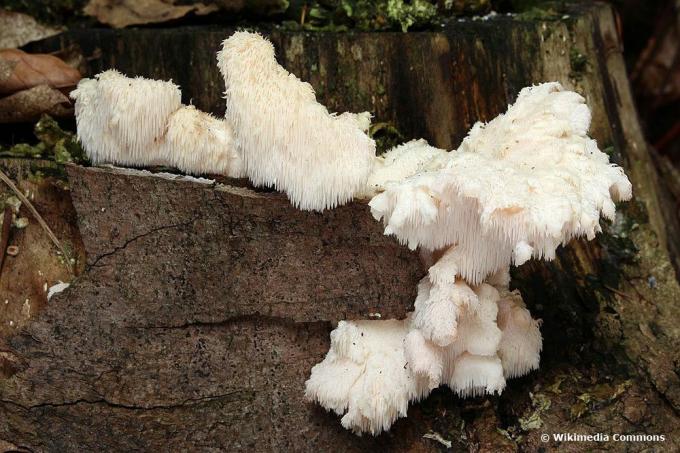
- 5 to 15 mm wide, with dense spines
- Hat cream white, later yellow-brown, white stem
- occurs under deciduous trees such as beech and birch
- August to November
- Danger of confusion: Northern barbed oyster, fir and hedgehog whiskers, knotty whiskers
Tip: Only collect young specimens of this type of mushroom, as the meat becomes tougher as it ages.
Mushroom varieties from E to G
Noble charms

- 5-10 cm wide, up to 7 cm high
- initially flat, later funnel-like with a rolled edge
- salmon-colored hat, orange stem (hollow in older mushrooms)
- orange milk flow
- widespread in pine forests
- Season according to the mushroom calendar: August to October, sometimes also in November
- is often attacked by maggots
- Risk of confusion: with other stimulus core
Spruce cones

- 1-3 cm wide brown hat with white lamellas
- found in spruce forests
- according to the mushroom calendar from March to June, partly in July
- Risk of confusion: pine cone
Bottle dusting
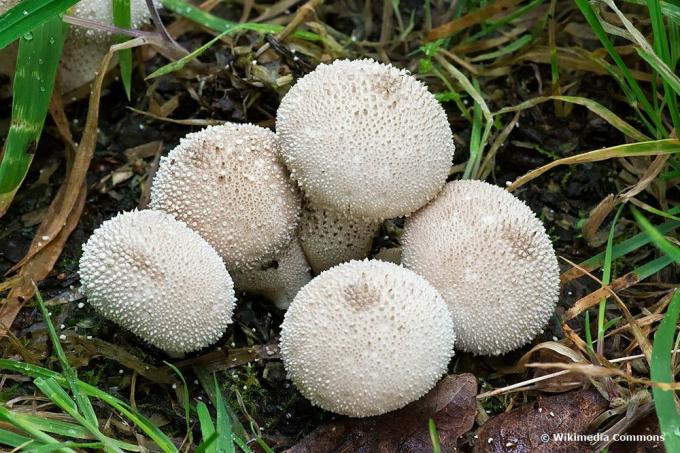
- approx. 4 cm tall
- white with many small tips
- occurs in groups in coniferous and deciduous forests
- June to October
- Danger of confusion: pear dusting (but this only grows on wood!)
Note: The flesh of young mushrooms is white, only they are edible. If the meat of a specimen is dark, keep your hands off it, because it is poisonous!
Woman's deaf

- first semicircular, later flat mushroom hat, easily peelable skin
- Its color ranges from purple-green to ocher
- The stem and lamellas are white
- in mixed forests, especially under beeches
- July to October
Note: There is a risk of confusion with other edible as well as poisonous deafblings. Therefore only collect this type of mushroom if you can identify it with certainty!
Goldröhrling

- 3-10 cm wide slimy hat at first hemispherical then cushion-shaped hat. 6-10 cm longer
- hemispherical hat up to 10 cm wide, yellow in color
- slimy skin is easy to remove
- yellowish stalk, thickened at the bottom
- grows under larches
- July to October
- Risk of confusion: with edible larch tubers
Mushroom varieties from H to M
Hallimasch
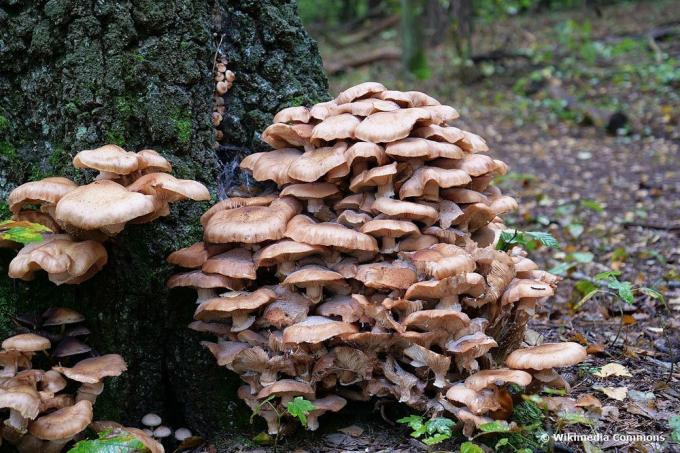
- yellow-brown, up to 10 cm in size
- spherical at first, flatter with age
- grows in clusters on dead and living wood
- September to October
- Low season according to the mushroom calendar: July, August and November
- Poisonous raw, edible when heated
- only eat hats of young mushrooms
Judas ear
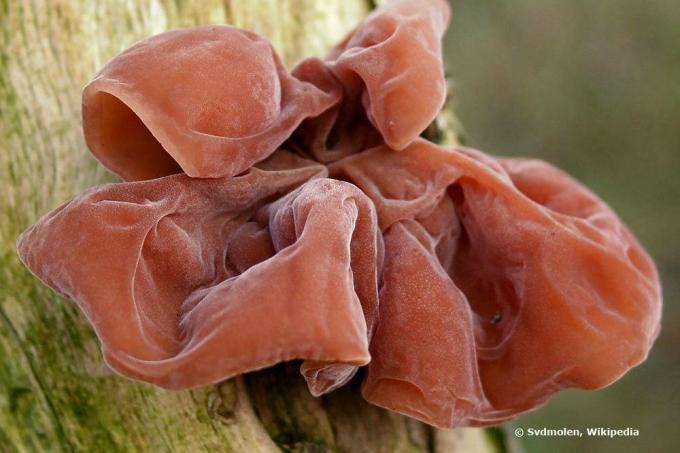
- reddish, very thin fruiting body
- approx. 4-10 cm wide
- can be found on deciduous trees all year round
- The main season runs from October to March
- Danger of confusion: ear flap fungus
Frizzy mother hen

- frizzy plexus of yellowish tint
- up to 40 cm tall
- grows on pine wood
- can be found in the same position for several years in a row
- Low season: June and July
- High season: August to November
- Confusion: Broad-leaved mother hen (also edible)
March snail
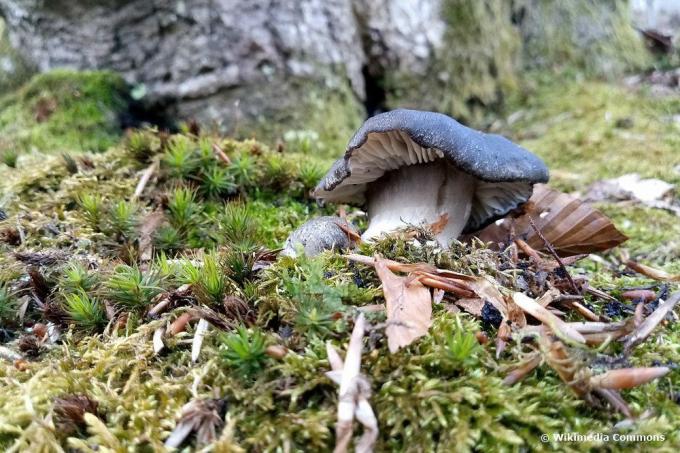
- gray, 3 - 8 cm wide hat
- lighter slats, with intermediate slats
- grows on northern slopes, at heights between 300 and 1000 m
- looking in spring, from January to April
- Danger of confusion: mushroom-like snail (not poisonous)
May mushroom
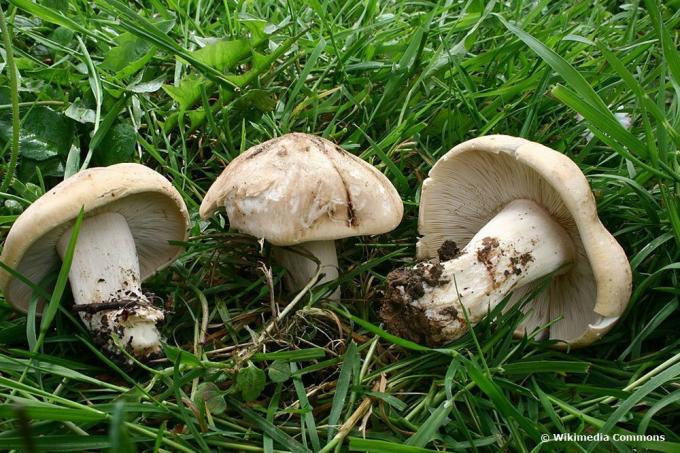
- Cream colored, 3-10 cm wide and 5-8 cm high
- Initially closed hat, later opened, with a rolled edge
- Mushroom smells like cucumber
- Grows on the edge of the forest, but also in gardens
- Short mushroom season from April to June
- Danger of confusion: brick-red cracked mushroom, giant red bloom
Chestnut boletus

- yellow stem, brown hat
- 3 to 10 cm wide, up to 12 cm high
- Main occurrence in the coniferous forest
- Mushroom season: June to November
- Risk of confusion: with the edible boletus
Tip: This type of mushroom is very suitable for drying, so it can also be enjoyed outside of the season indicated in the mushroom calendar.
Mushroom varieties from P to T
parasol
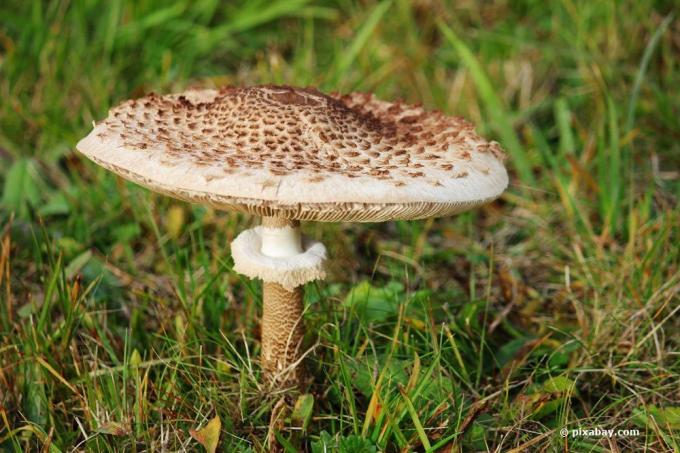
- light hat with brown spots, later becomes flat
- usually more than 20 cm wide
- up to 40 cm high stem, bulbous at the bottom
- raw it is poisonous!
- Mushroom season runs from July to November
- look along the edge of the forest
- Risk of confusion: saffron umbrella, garden giant umbrella
chanterelle

- orange-yellow mushroom, 2-10 cm wide
- has over 40 other names in this country
- occurs in deciduous and coniferous forests
- Collection time is June to October
- Risk of confusion: wrong chanterelle
Velvet foot rubble
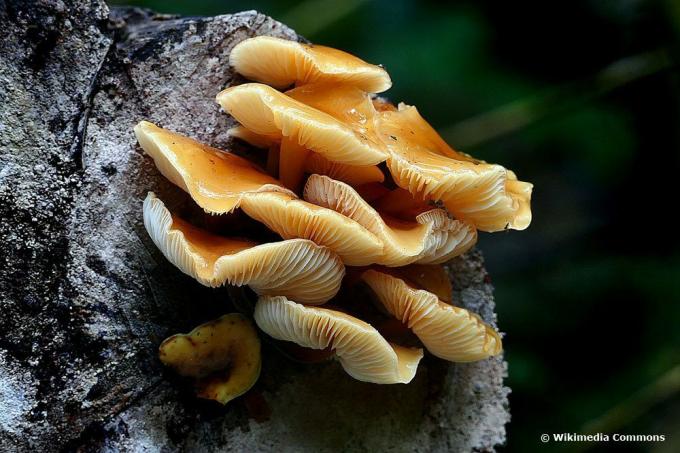
- orange, approx. 5 cm wide hat
- it's flattened and greasy
- yellowish-white lamellae, yellow-brown stem
- grows near willows and poplars, even under snow
- September to April
- Risk of confusion: poisonous hatchet
Schockftintling
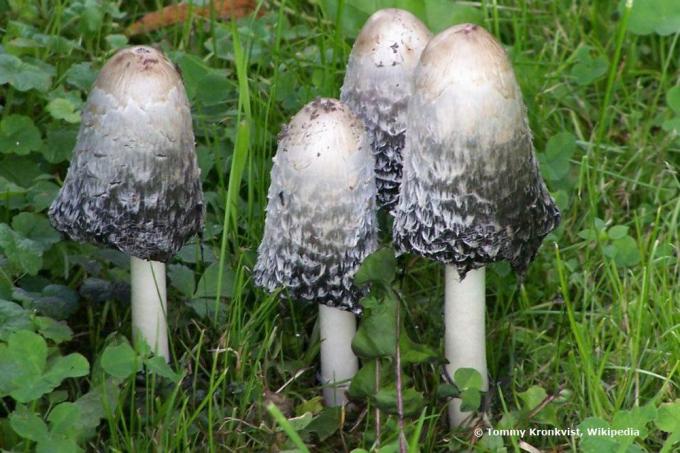
- Hat is 5-10 cm high and cylindrical
- white with brownish scales
- Mushroom season runs from May to November, but also March and April
- grows on roadsides and in gardens
- is rarely found in forests
- Risk of confusion: the roller shape makes it unmistakable
Bread stubble mushroom

- 3-8 cm wide and wavy, cream-white hat with spikes
- Find places in deciduous and coniferous forests
- Mushroom season: July to November
- Risk of confusion: Semmelporling, Schafporling
Edible morel
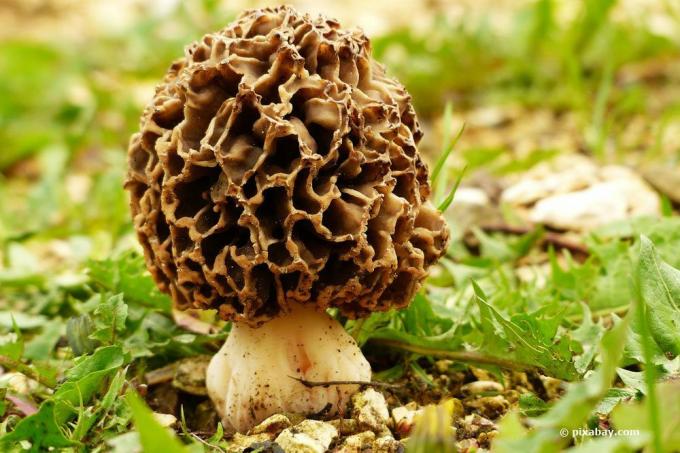
- 3 - 10 cm high, hollow mushroom hat on the inside
- mostly round, sometimes pointed
- honeycomb-like ribs
- Coloring ranges from light beige to brown and black
- Stem is a little lighter
- found in mixed forests
- according to Mushroom calendar, the mushroom season is short, only from April to May
- Low season: February to March and June
- Risk of confusion: Common morel
mushroom

- brown hat can grow up to 22 cm wide
- Stem is max. 20 cm long, light brown and thicker towards the bottom
- there are 7 different types of porcini mushrooms depending on the season and location
- Porcini mushrooms grow under spruce trees
- July to October (summer boletus)
- Risk of confusion: bile tubelet
Stick sponges
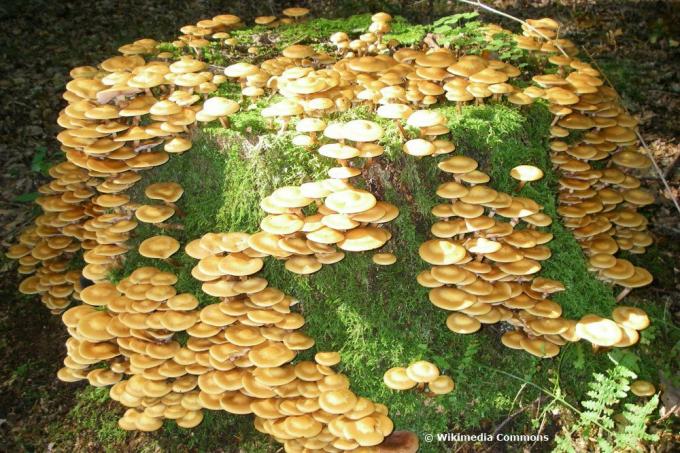
- approx. 4 cm wide and 5 cm high
- semicircular, brown shade
- scales protruding below the ring (important distinguishing feature)
- mostly occurs in deciduous forests
- Collection period: April to November
- Risk of confusion: poison dump and softwood dump
Trumpet of the dead
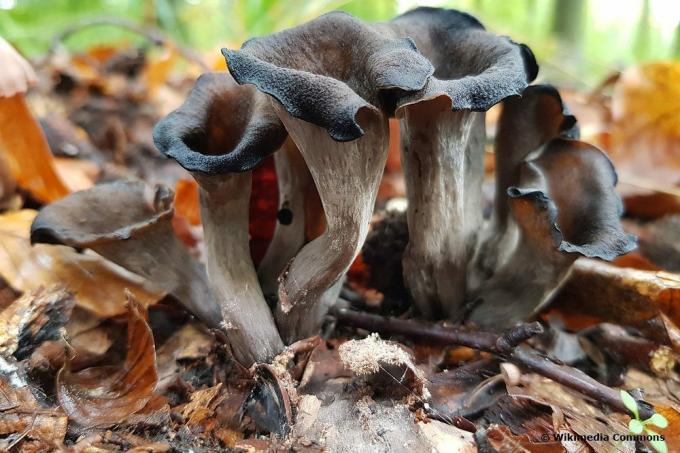
- 2-6 cm wide, black hat, gray handle
- Shape resembles a trumpet horn
- outside gray, inside black
- grows in deciduous forests
- from August to November
- Risk of confusion: gray cape
Note: According to the mushroom calendar, the mushroom season for this variety is limited to four months. However, it can be used in the kitchen all year round because it is dried. This mushroom cannot be used fresh.

